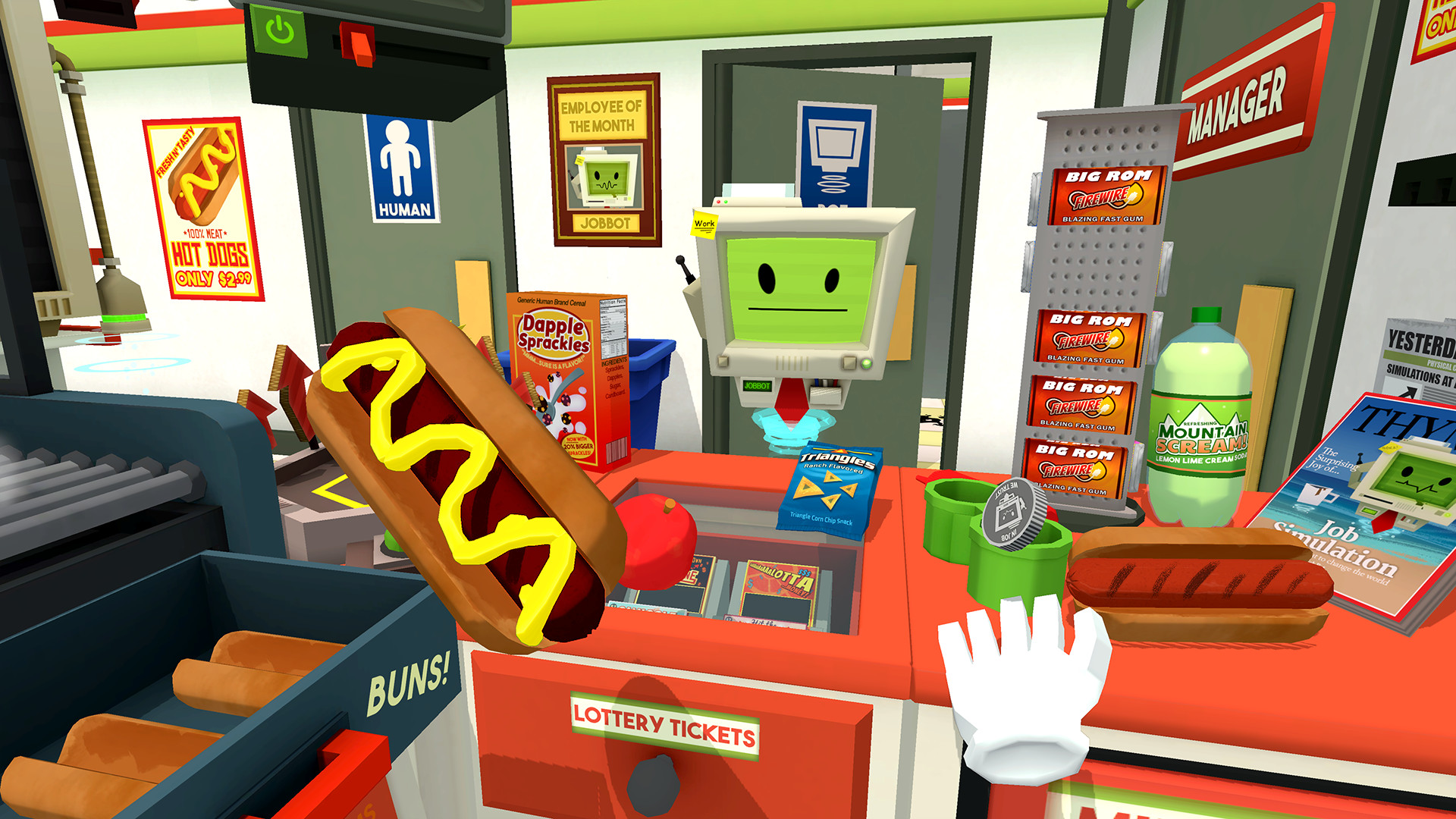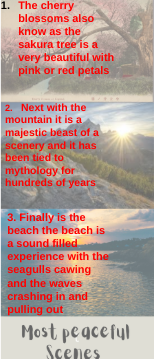The Future of VR
April 21, 2019
If a word is in italics, it means that word is in the glossary.
History of VR

When VR first made it onto the scene in 2013 with the Oculus Rift DK1 (Development Kit 1), it was nothing more than a box with a screen in it. However, this box made a huge difference to how a game could feel to you. Oculus would then release the Oculus Rift DK2 in 2014 and the Oculus Rift CV1 (Consumer Version 1) in early 2016. However, when the HTC Vive was released a month later, it completely changed what defined VR. No longer were you just sitting down and looking into the game, now you were inside of the game. You could move freely throughout your room, and you had actual hands that you could use to interact with the world as you wish. All the things you did with a tap of a button before, now you could do it with your own hands. Oculus soon followed suit with this new standard by releasing the Oculus Touch controllers meant to go with the Oculus Rift CV1. These new standards would change what VR is forever.
What is VR?
If you aren’t necessarily someone who understands tech that well, you may be wondering what VR is, which is why I am going to tell you the basic definition of VR and how it works. According to Wikipedia, “Virtual reality (VR) is an interactive computer-generated experience taking place within a simulated environment. It incorporates mainly auditory and visual feedback, but may also allow other types of sensory feedback.”. Virtual Reality can come in many different ways, but it usually requires a VR headset that you wear over your eyes. While many headsets are just boxes you put a phone in, others are more advanced. These more advanced headsets (like the HTC Vive or Oculus Rift) usually come with controller[s] so that you can interact with the world inside the headset. When the headset is activated, you put it on your head and you look through two lenses, one for both of your eyes. The screen you look into shows the same image through both of the lenses. This is to give you the illusion of a three dimensional area. The headset isn’t all there is to it though, as there are more and more tools being made to give you an even more immersive experience.
Gaming in VR

While VR has many other uses, the one that is most common today is for gaming. As stated in the first paragraph, VR started as just a headset you wore over your eyes while playing a game, and then later became the game. VR nowadays allows you to enter a whole new world where the possibilities are endless, and also lets you forget that you’re in the real world. In VR, everything you would normally do looking at a screen and pressing buttons is now done inside of the world with your own hands. This means gamers can now got lost in another world without having to worry about the real world, and that’s all I really want from VR.
The Future of VR

Virtual Reality has a lot in store for the future as well. On September 26, 2018, Mark Zuckerberg announced the Oculus Quest, the world’s first all-in-one headset which is set for release in the Spring of 2019. The Quest is sort of a mix between the Oculus Go, an affordable way to get into VR without a PC, and the Oculus Rift, a high-quality room-scale headset. This means you can play a Rift-quality experience without the need to buy an expensive PC. Oculus isn’t lying when they say “all-in-one” either. All of the other stuff you would need, such as sensors and a PC are built into the Quest. The best part though is the complete lack of wires, offering more freedom to the player. However, this does not make it an alternative to PC VR. Oculus also recently announced the Oculus Rift S, an improved version of the Rift CV1 with a higher resolution, built in sensors, and a reduced screen-door effect.
HTC and Valve, the creators of the HTC Vive, have also recently announced the Vive Focus Plus, likely to compete with the Oculus Quest. The Focus Plus is also an all-in-one headset, with many differences to it’s non-consumer predecessor, which was more like the Oculus Go. One of the main differences from the original Vive Focus is that there are two controllers instead of one, who both have six degrees of freedom. Contrary to the Quest that has 4 sensors, the Focus Plus only has two visible sensors, though there could be more. Only time will tell whether the Focus Plus will be able to compete with the Quest. HTC and Valve are also working on the Knuckles controller meant to go with the HTC Vive. The Knuckles controllers seems to take inspiration from the comfortable design of the Oculus Touch controllers, but with some tweaks. The Vive Knuckles controllers have a strap that allows you to let go of your controller without dropping it. They also paired it with a built-in finger sensor, which can be used to tell when the player is grabbing the controller in real life and then have the player grab in the game as well. Valve has also recently announced the Valve Index, a new headset set to be released in May. Not much is known about it at the moment, but new information is likely going to be revealed later.
Which Headset is Right for You?
If you really want to get into VR, you need to know what you want from VR so you get a system right for you. If you want just the bare basics of VR, you can buy a VR viewer that you can put your phone in. This doesn’t make for a perfect experience, but it’s still VR. Alternatively, you can get the Oculus Go, a standalone headset made for a cheaper way to get into VR, and it also comes with a controller!
If you want more from VR but don’t want to spend an extra thousand dollars on a VR-Ready PC? Well, the Oculus Quest is for you (or will be in spring 2019). It allows you to experience PC VR without having to buy a whole new PC. There are some negatives that come out of this, though. Since the Quest doesn’t use a PC, it runs on a mobile chip, specifically the Snapdragon 835. Because of this, the Quest can not run as many graphically demanding games like the Rift can, meaning some games needed to be downgraded visually or cut completely. Personally though, I’m not worried about graphics. Alternatively, you can try the Vive Focus Plus, an also standalone VR that has increased comfort and improved lenses. Not a whole lot is known about the Focus Plus, but it’s set to be released in Q2 of 2019. If you have a PlayStation 4, then you can also try the PlayStation VR, costing only $299 USD.
If you want the best out of VR and have money for a PC, then the HTC Vive and Oculus Rift are for you. From here, it’s all up to personal preference. If you prefer a lightweight and comfortable experience, and don’t mind playing in a smaller area, then the Oculus Rift is for you. If you want a larger space and don’t mind a heavier headset, then the Vive is your best bet.
Conclusion
In conclusion, Virtual Reality is doing amazing right now, and it’s only going to get better. With what we have coming in the future along with other third-party accessories, the future of VR is looking bright.
Glossary
Screen Door Effect – When the fine black line between individual pixels becomes visible.

Resolution – The number of pixels that can be displayed on a screen. Resolutions are often written down as Width x Height, e.g. 1920×1080.
Degrees of Freedom – Ability to rotate your head in any direction and move your head across a 3D axis. Six degrees of freedom allow for all of these abilities while three degrees of freedom only allow for rotational movement.
Sensor (in VR) – Three sensors, the gyroscope, the magnetometer, and the accelerometer that are used in VR for rotational and positional tracking.
Third-party – A reusable software component made by someone other than the creator of the original program.






